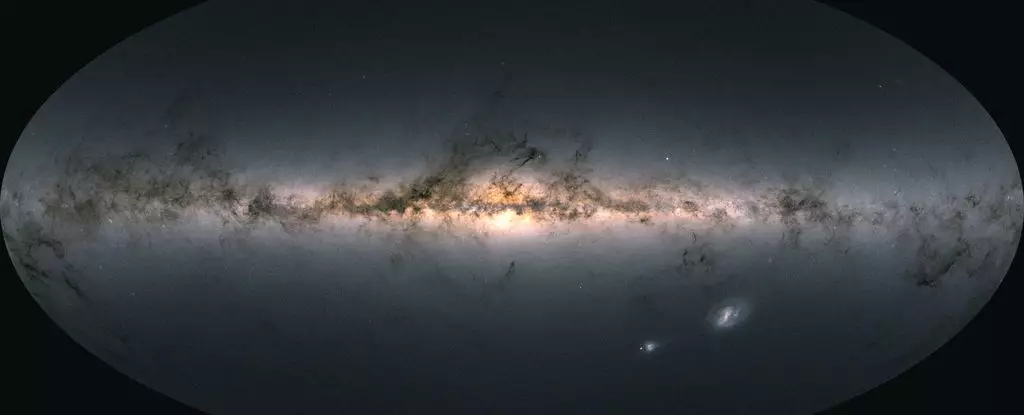Recent astronomical investigations have unveiled potential evidence of a colossal black hole concealed within the Large Magellanic Cloud (LMC), a dwarf galaxy that orbits our Milky Way. Researchers led by Jiwon Jesse Han of the Harvard & Smithsonian Center for Astrophysics have identified a mass roughly 600,000 times that of our Sun lurking in the LMC’s depths. This finding carries significant implications, not only for our understanding of the black hole population but also for future cosmic events, including the eventual collision between the LMC and the Milky Way itself. The research, advocating for this groundbreaking discovery, is currently available on preprint server arXiv and under review for publication in The Astrophysical Journal.
Understanding the Elusiveness of Black Holes
Black holes have long fascinated the scientific community, particularly due to their enigmatic nature. They do not emit light like stars; their existence must often be inferred through indirect means. Scientists typically observe the effects that these massive objects exert on surrounding celestial bodies. In many cases, this requires meticulous measurements of stellar orbits, as was done to confirm the presence of Sagittarius A*, the supermassive black hole at the center of our galaxy.
However, Han’s team took an innovative approach by focusing on hypervelocity stars — stars that stray far from their home galaxy at astounding speeds. This alternative method allowed researchers to investigate potential hidden black holes by examining anomalies in stellar motion resulting from their gravitational influence.
The research centered on the Hills mechanism, a hypothesis that explains how a black hole can interact with two other stars in a gravitational maneuver that ultimately ejects one of them into intergalactic space. This gravitational “dance” can yield hypervelocity stars traveling faster than average for their galactic counterparts. By pinpointing 21 such stars within the Milky Way’s halo using data from the now-retired Gaia space telescope, the researchers sought to trace these stars back to their origins.
Gaia’s impressive mapping capabilities allowed the team to chart the stars’ three-dimensional positions and velocities, delving into their mysterious trajectories. More critically, they focused on ruling out other acceleration mechanisms to confirm the stars’ origin. This rigorous analysis successfully pinpointed 16 stars, revealing that seven originated from the region surrounding Sagittarius A*, while the remaining nine were traced back to the Large Magellanic Cloud.
The Implications of Galactic Collision
The impending collision between the Milky Way and the LMC poses as a crucial timeline for astronomers. At approximately 160,000 light-years away, the LMC’s gradual movement towards our galaxy is not simply a static affair; a predicted cosmic merger is expected to occur in roughly 2 billion years. Should the existence of this massive black hole be corroborated, it may contribute to the black hole merger process, culminating in the merging of the two black holes — eventually resulting in larger entities as they coalesce.
This dynamic provides invaluable insight into the evolutionary mechanisms governing black holes’ growth. Understanding how smaller black holes can amass mass through subsequent mergers opens a window into the vast hierarchy of black holes throughout the universe. Moreover, studying such phenomena enhances our overarching knowledge of galactic evolution, star formation, and the complexities of cosmic interactions over eons.
The findings led by Han and his team promise a new chapter in black hole research, marking a pivotal moment in our quest to understand these extraordinary cosmic giants. As scientists aspire to validate and ascertain the properties of this new potential black hole, future studies will likely employ an array of observational techniques, including gravitational wave detections and advanced imaging technologies, to observe mergers and interactions in real-time.
Although we may not be alive to witness the awe-inspiring finality of these cosmic interactions, the implications of this research stretch far into the future. By illuminating the pathways through which black holes can evolve and grow, we deepen our understanding of the universe’s narrative — a tale defined by chaos, collision, and the inexorable dance of celestial bodies. As this research progresses, it stands to alter the fabric of our comprehension of cosmic formations and the fate of galaxies in the distant future.

